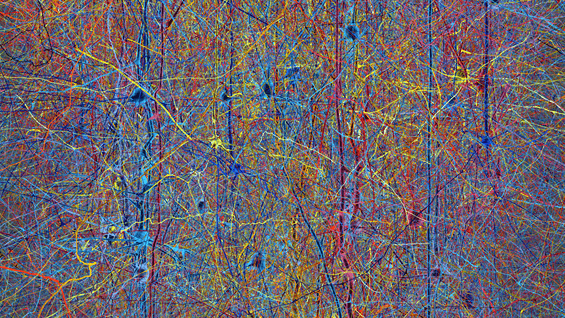
Dr Hayley Sharpe became a Lister Prize Fellow in 2020.
We sat down with her to find out what it was like to apply for – and win – the Prize during a global pandemic and how she’s using the funding to propel her research forward.Due to the COVID-19 lockdown, Hayley’s interview took place by video conference.
“I remember running through my talk and practising positioning the people on-screen so that I could see them while I spoke,” explains Hayley. “On the day, it worked well, and may have been less intimidating than it would have been in person. I remember leaning towards the screen and gesticulating, as I would have done in person.”
The prize-giving ceremony is yet to take place, but it is hoped this will be able to go ahead later this year.
“What’s great is that the Lister extended the period of the Fellowship by a year to compensate for this lost period of time,” says Hayley.
Her lab explores receptor tyrosine phosphatase (PTP) signalling mechanisms. These cell surface receptors are enzymes that help cells sense and respond to their environment. By catalysing the removal of phosphate groups from other proteins, they trigger changes in the cell.
Hayley is using the Lister Prize funds to look at a family of PTPs that regulate cells’ attachment to each other. This research could uncover new ways of targeting PTPs, for example in cancer or spinal cord injury.
This is a well-established area of research but had gone out of fashion because of challenges in generating tools, like specific inhibitors,” says Hayley. “But we stumbled across a new, unappreciated way in which this proteins signal. I think that’s what captured the interest of the Scientific Advisory Committee.”
Her lab is using the funding to identify tools to dissect this signalling mechanism and improve their understanding of how it functions in health and disease: “This funding gives us the ability to plough into something that’s relatively risky because it’s so new and not yet appreciated. It’s a huge stepping stone.”
Since winning the Prize, Hayley’s lab has already identified a mutation of interest. The flexibility of the Lister’s funding means that they have been able to move straight into making a mouse model. They are now using this to study the mutation in disease contexts.
“The funding has also been incredibly helpful – under the circumstances of the pandemic – to help bridge people,” says Hayley. In the future, she is also keen to use the funds for a studentship.
We wish Hayley and her team all the best for their ongoing research.
You can find out more about their work on the lab’s website.
Read more about Hayley’s personal journey to winning the Lister Prize on our What it meant to me page.



